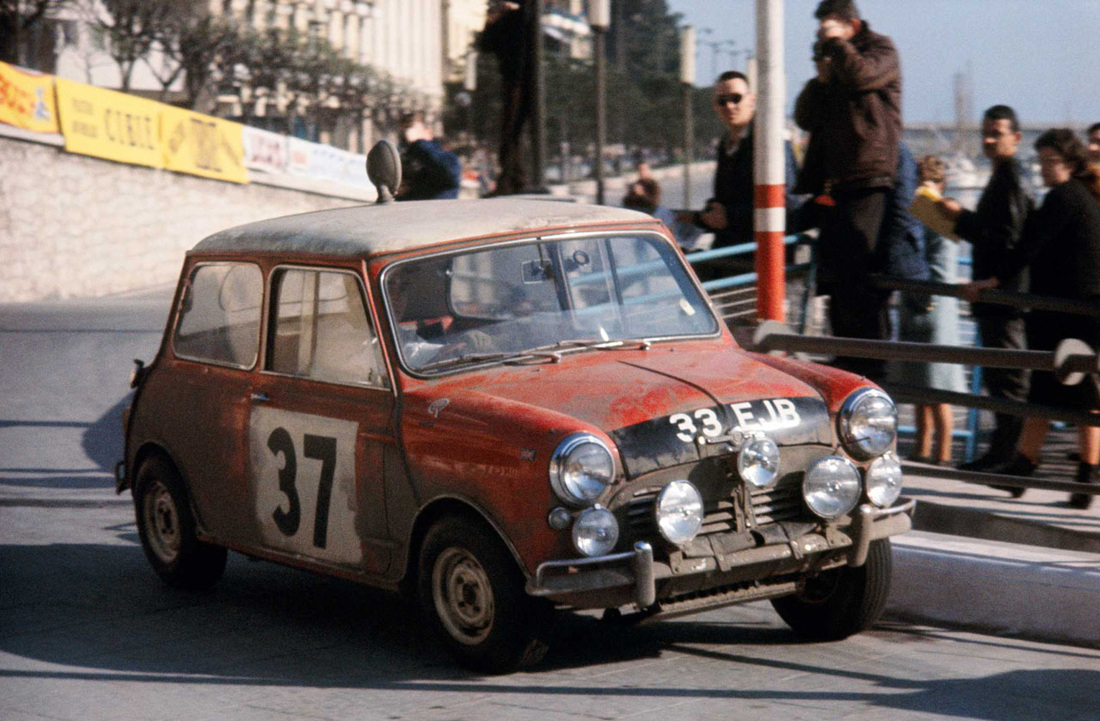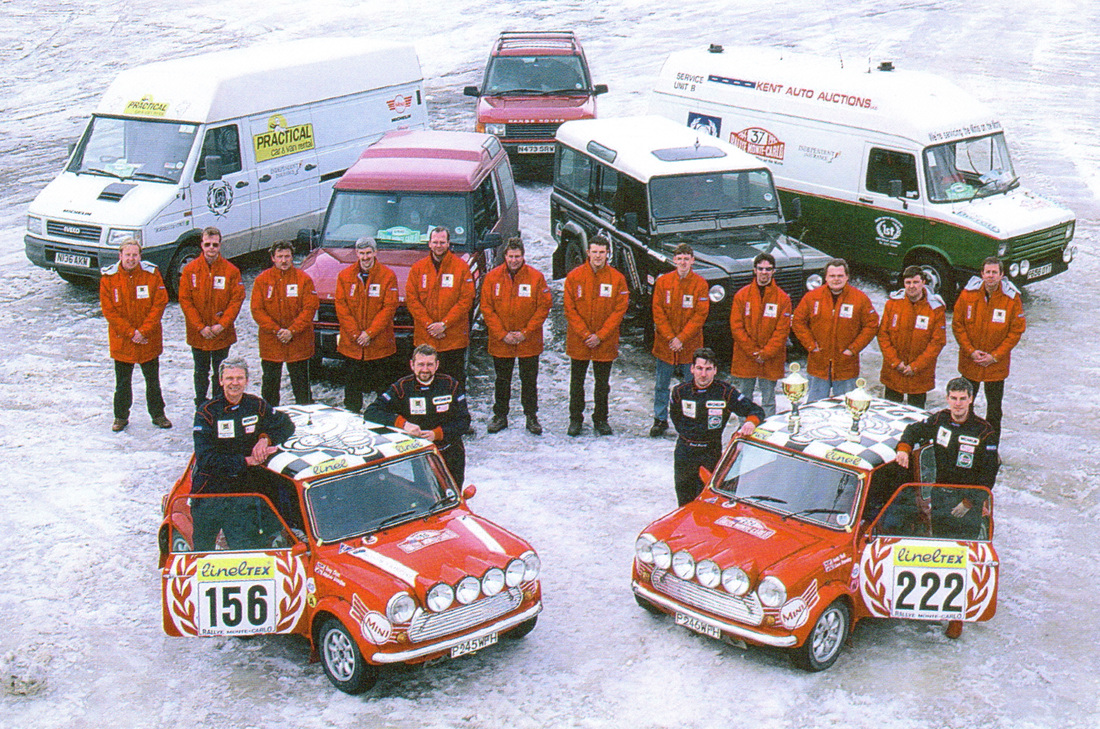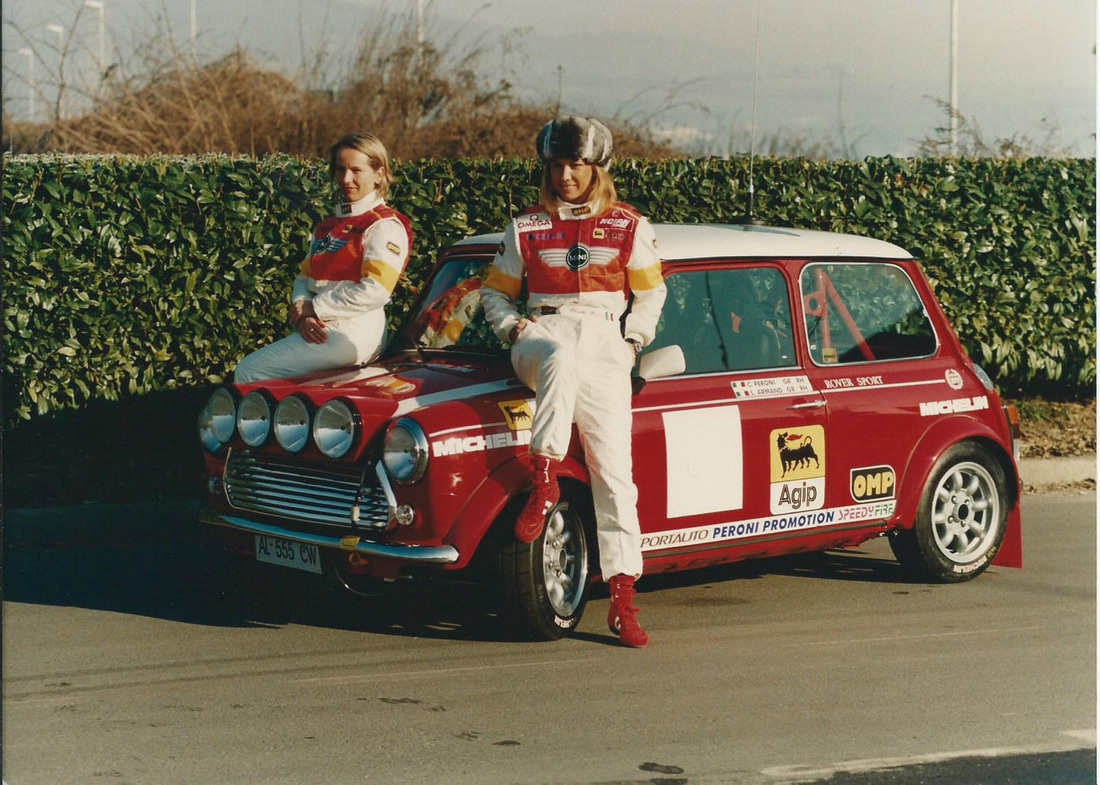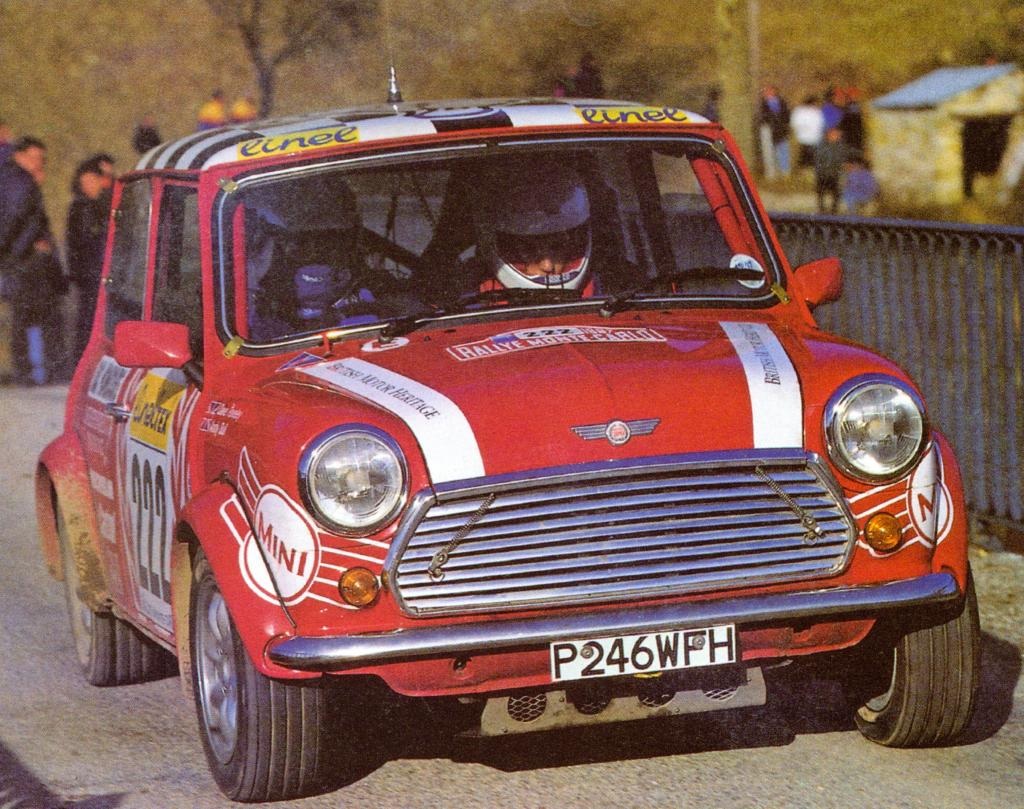CHAPTER V: THE FINAL FOUR YEARS
Now that all of the Mk.7 Mini's demanding engineering challenges had been overcome and its design was well and truly sussed, Rover (and its German owners) now had the perfect platform on which to build the future success of the Mini brand. As you'll soon discover, the car's final four production years were some of its most exciting and memorable.
MOTORSPORT
As anyone who's even slightly familiar with the history of the Mini will attest, one of the most significant reasons for its rise to fame in the 1960s was its racing success. In some of motorsport's most memorable David and Goliath-esque battles, the humble Mini was often able to go toe-to-toe with far more powerful rivals and, against all the odds, emerge victorious. What better way, then, to emphasise the Mini's competition prowess than to return to the scene of its most famous sporting achievements?
MOTORSPORT
As anyone who's even slightly familiar with the history of the Mini will attest, one of the most significant reasons for its rise to fame in the 1960s was its racing success. In some of motorsport's most memorable David and Goliath-esque battles, the humble Mini was often able to go toe-to-toe with far more powerful rivals and, against all the odds, emerge victorious. What better way, then, to emphasise the Mini's competition prowess than to return to the scene of its most famous sporting achievements?
That scene is, of course, the Monte Carlo Rally. Beginning in 1964, BMC's factory team took an unprecedented string of four consecutive wins there, a feat which left the Mini's status as a rally great in no doubt. 30 years on from that extraordinary maiden win, the Mini returned to the principality with a team funded by Rover - and Paddy Hopkirk in the driving seat.
Throughout the event, the Mini was a fan favourite, with thousands of spectators lining the snow-covered stages to show their support. Realistically, the team never had a chance of battling for top honours as they had three decades ago, but that wasn't the point. The Mini rally car was back, and - for four years at least - was here to stay.
Throughout the event, the Mini was a fan favourite, with thousands of spectators lining the snow-covered stages to show their support. Realistically, the team never had a chance of battling for top honours as they had three decades ago, but that wasn't the point. The Mini rally car was back, and - for four years at least - was here to stay.
Above: the outright winner of the '94 Monte, François Delecour. Above right: a Top Gear feature charting the Mini's return to the rally in 1994 (video: taffy1967)
As well as entering the Monte Carlo Rally each year from 1994 to 1997, factory-backed Minis took to the stages of the RAC Rally and even competed at the fearsome Nurburgring 24 Hour and 6 Hour events. Continually locking horns with its arch nemesis, the Fiat Cinquecento, Rover Coopers enjoyed considerable success across all these events, regularly coming out on top of their far more modern and sophisticated rivals.
For the 1996 running of the 6 Hours, Enterprise Racing - the company responsible for constructing the earlier Monte Carlo cars - built two Rover Cooper 35 Limited Editions into full-on racing machines. With six-speed gearboxes, upgraded brakes and electronically fuel injected A-series engines, these Minis were well prepared to face the challenges which lay ahead. The race was intended to be used as a development exercise in preparation for the following season's Monte Carlo Rally (which took place the following January). Rover's aim was to field a two-car team of Minis at the '97 Monte and, ultimately, to return the Mini to its winning ways by taking a class victory at the event. Amazingly, both of the Rover Germany works Minis took the chequered flag after a faultless 6 Hours running, much to the joy of the marshals and spectators. And not only did they finish, they took first and second in class - an astonishing achievement against far more contemporary machines.
With three years of unexpected success, excitement within Rover was building, and attention turned to the forthcoming Monte Carlo Rally. Shortly after the team's completion of the 24 Hour race, authorisation was given to convert one of the Nurburgring cars for rally use. This car became, in effect, the development car for the Monte Carlo entry, gaining Sports Pack wheels and arch extensions to help market the new Mk.7 road car. After running in the Tour of Mull Rally, a further development exercise, both ex-Nurburgring cars were returned to Enterprise Racing's workshop in November 1996 to commence preparation for next year's Monte Carlo. This was to be just the first in a long line of events which British Motor Heritage planned to enter the Minis in throughout '97, '98 and '99, including Finland's 1000 Lakes, the Circuit of Ireland, New Zealand, the Acropolis and even the Safari Rally.
One of the ex-Nurburgring cars - which later contested the Tour of Mull Rally - was prepared to Group N spec, which only permitted slight modifications from the production car (it retained its factory walnut dashboard, for example), and given the registration P246 WFH. Meanwhile, the other car was kitted-out in accordance with Group A rules, which allowed for far more comprehensive upgrades over the standard showroom car, and registered P245 WFH. Both cars featured twin-point fuel injection engines built by Swiftune, although the Group A unit produced 106 bhp against the Group N's 85.
|
Sadly, the number 156 Group A car of Tony Dron and Alistair Douglas was forced to retire before the event had even begun, encountering a stuck valve during the concentration run from Bad Hombourg to Monte Carlo. David Pavely and Andy Bull, meanwhile, completed the concentration run problem-free in their Group N Cooper. Alongside the British entrants (above) were three other factory teams representing Rover France, Rover Japan and Rover Italy, all of which made it to Monte Carlo in one piece.
The very first day of the event, however, saw the retirement of Claudia Peroni and Liliana Armand's Italian-entered Group N Cooper with gearbox failure. Later on that same day, Yasuo Kusakabe crashed his Surf Blue Rover Japan car as a result of poor tyre choice, leaving him with damaged steering and, in turn, no option but to sit out the remainder of the event. Now, with only two of the five Minis remaining in contention, all |
|
available resources were required to make sure both cars made it home.
Despite coming up against gearbox and throttle gremlins during the rally, and experiencing a number of near misses and close calls, both the Pavely/Bull car and the Vie/Curat French entry made it to the end of the event successfully. The French entrants finished in 52nd position overall, ahead of David Pavely and Andy Bull who took the finish in 59th place overall, 4th in class, narrowly missing the podium. The British crew were also awarded 'Best overseas finisher' in the 1300cc Group N category. Little did they know, but each of these drivers were piloting what were to be the very last 'works' Minis to run in the Monte Carlo rally, and by far the fastest, most capable, most advanced (and most expensive) works Minis ever built. Although British Motor Heritage had planned to embark on a fully-fledged rally season with the now finely-honed Minis, it sadly wasn't to be. |
So, why did the Mini's incredibly promising - and increasingly successful - motorsport comeback career come to such an abrupt halt? That is a question we may never know the answer to. It could be that BMW didn't approve of Rover's forays into the world of racing, simply that it was costing the company far too much money or even - as has been suggested before - that the classic Mini's success on the racetrack and the rally stages of the world against far more modern competition was simply 'making it too popular' in the years leading up to the launch of the new MINI.
Whatever the reason, one thing no one can disagree with is that these very special cars were dripping with potential that was never fully realised - something which made their mysterious demise all the more difficult to comprehend.
Whatever the reason, one thing no one can disagree with is that these very special cars were dripping with potential that was never fully realised - something which made their mysterious demise all the more difficult to comprehend.









